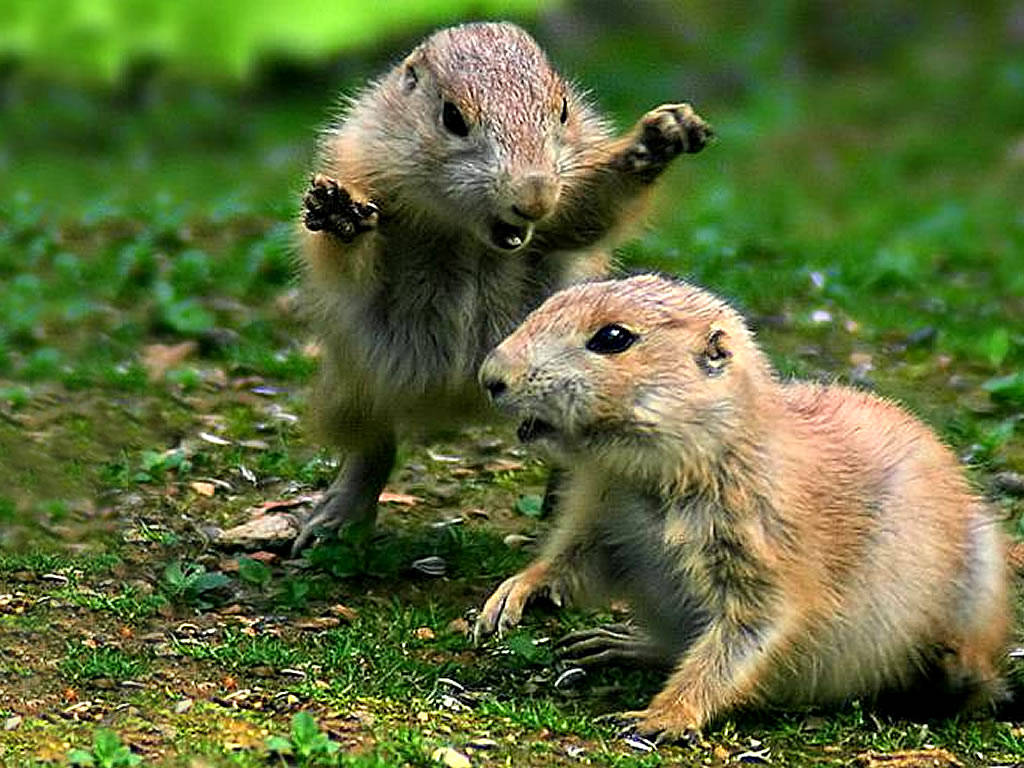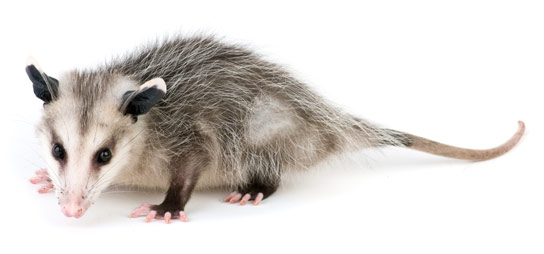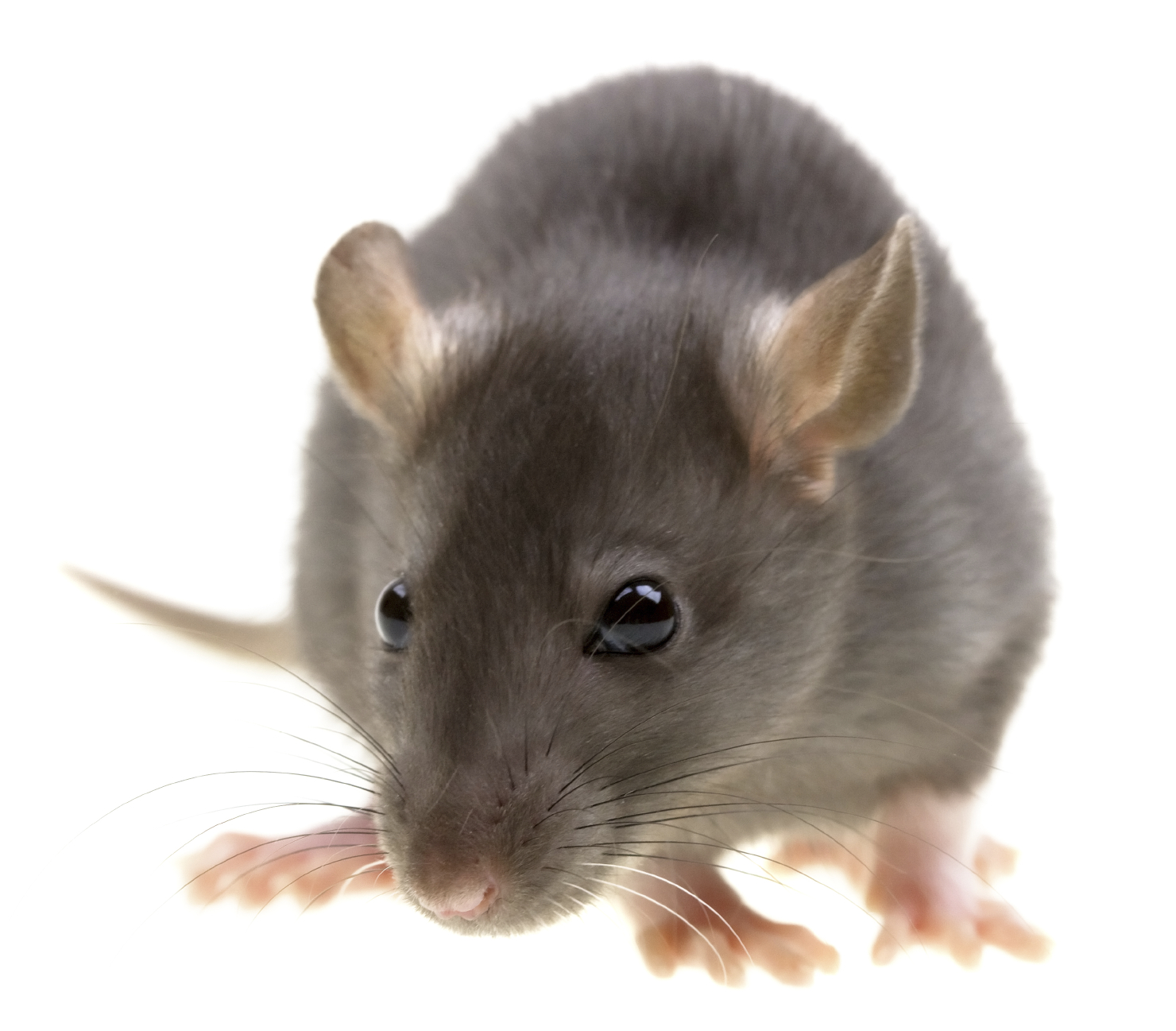
Rodents, comprising about two thousand species,
form the largest, most abundant mammal
order. They are found almost everywhere on
the earth. Most are ground dwellers and many rodent
species dwell underground in burrows or
tunnel networks of varying complexity and size.
However, rodents also dwell in tree nests (squirrels)
or lodges in ponds and streams (beavers),
or simply run in herds (capybaras). Judging from
fossil remains, rodents were widespread and plentiful
fifty million years ago. It is believed that they
evolved from small, insect-eating mammals, and
did not develop into large species until a million
years ago. The largest ancient rodents were giant,
bear-sized beavers. Contemporary rodents are
usually small. However, the largest modern rodents
are herbivorous capybaras, which grow to
approximately 100 pounds as adults.
Rodents also show remarkable diversity in
their diets. These range from the vegetarian
capybaras to the all-encompassing diet of omnivorous
rats, which will eat meat. Rodents have
many roles relative to humans. Hamsters and
other small rodents are pets, capybaras are eaten
as food, chinchillas are fur sources, and a few, such
as rats and mice, are pests that compete with humans
for their food crop supplies. The tremendous
adaptability of rodents, especially rats, explains
their wide geographical distribution in
areas differing hugely in climate.
Physical Characteristics of Rodents
Among the two thousand known rodent species,
size varies widely. Some small adult mouse species
weigh about a fifteenth of a pound. At the
other extreme, capybaras, largest of contemporary
rodents, are the size of pigs.
Regardless of size, all rodents possess pairs of
large, chisel-like front teeth in both the upper and
lower jaws. The roots of these incisor teeth are located
far back in rodent jawbones and grow continuously.
Rodents lack the tearing teeth (cuspids)
of carnivores as well as several premolars. Therefore,
a large space exists between their incisors
and molars. This allows the incisors to operate
well in gnawing. The design of rodent dentition
also allows the gnawed food to be transferred easily
to the molars for efficient grinding. In addition,
the muscles of the rodent lower jaw are arranged
so as to enable its easy movement backward, forward,
and laterally. This optimizes grinding of
gnawed food.
Rodent incisors are different from those in
other animals. Their continued growth from the
root is valuable, especially because only the front
surfaces of these teeth are protected by enamel,
the hardest material in teeth. Thus, gnawing food
causes the rear surfaces of the teeth to wear down
faster than their front surfaces. This wear pattern
is the basis for development of the chisel-like incisor
edges. It continues as long as a rodent eats regularly,
keeping the incisors sharp. Another interesting
aspect of rodent mouths is that cheek fur
grows inside the mouth and fills up the space between
incisors and molars. This hair acts as padding
and filters out food chunks too large to be
swallowed comfortably.
Other than the special development of "gnawing
machinery" of the mouth and teeth, rodents
are anatomically unspecialized, with no other
ubiquitous anatomic features. Where any special
characteristic has developed in some rodents, it
appears to be due to environmental need. For example,
claws and front paws of burrowing rodents,
such as woodchucks and moles, make them
efficient diggers. In addition, gliding adaptations
in some squirrels allow them to "fly" (or actually
glide) from tree to tree. Furthermore, leaping rodents
such as the kangaroo rat use both hind feet
together to enhance leaping capability. Yet another
such adaptation is the webbed feet seen in
beavers.
The Lives of Rodents
Rodents, like all other mammals, are warmblooded.
They carry offspring to term in a uterus
where each fetus is connected to the mother via
the placenta, give birth to them, and nurse them.
Depending on the rodent, the sequence of events
between fertilization and the end of the nursing
period takes between 5.5 weeks for a small mouse,
to well over a year for large rodents. The process is
easiest to describe for rats, although it is quite similar
for mice and hamsters.
After fertilization, rat eggs make their way into
a complex uterus which can hold eight to sixteen
fetuses. There, each attaches to the uterine wall
and develops, over three weeks, into a rat pup.
The pups are born pink, hairless, blind, and incompletely
developed. They are then nurtured by
their mothers, who have the instinct of all mammals
to care for their offspring. Rats breast-feed
their pups for three weeks. At the end of this time,
they are fully covered in hair, have full vision, and
have begun to eat foods other than milk.
In another month the pups are sexually mature
and can breed. This makes it clear why omnivorous
wild rats pose a threat to humans.Anypair of
rats can produce up to eighty offspring per year.
Furthermore, within six weeks after birth, any
two offspring can, and do, reproduce.
Inbred laboratory rats live for two to three
years, depending on the strain. Males are much
larger than females (often twice their size) and
may attain body weights up to two pounds. In the
wild the life expectancy of rats varies greatly.
However, reports of animals living for over five
years occur. Some males have been reported to be
as large as small cats or dogs. Wild rats live in
complex tunnels as colonies of a hundred or more
animals.
Other rodents live different versions of the life
of rats. Litter size, gestation time, group organization
all vary. For example, the larger rodents have
only a few offspring per litter, and some rodents
live in tree nests (squirrels) or lodges in ponds
(beavers). Life expectancies may be ten years or
more, assuming death by natural causes.
Destructive and Beneficial Rodents
Rats and mice interact extensively with humans in
a destructive fashion. The problems involved are
competition for food, and disease transmission
fromrodents to humans. Rats and mice, viewed as
pests, are known to eat 10 to 25 percent of grain
crops grown, harvested, and stored worldwide.
This percentage varies depending upon the extent
of use of rodenticides, such as warfarin, in various
nations and the extent of agricultural technology.
Very careful use of rodenticides is important because
they are quite toxic to humans.
Rodents are disease vectors, historically causing
outbreaks of serious epidemics of the bubonic
plague and tularemia. This was especially serious
during the Middle Ages, when rats were responsible
for the transmission of the Black Death. Currently,
most sporadic outbreaks of rodent-derived
infectious disease are handled by use of rodenticides
to kill carriers and antibiotics to destroy
rodent-borne microorganisms that infect humans.
Most often it is not the rodents themselves that
cause disease outbreaks. Rather, infection occurs
as contaminated fleas and ticks move from rodents
to humans. Rats are seen as the main disease
vectors because they abound near and in human
habitations. However, mice and any other infected
rodents can be disease vectors.
Concerning beneficial use of rodents, one can
point to the myriad rats, mice, hamsters, and
guinea pigs utilized as laboratory animals in testing
and developing pharmaceuticals, the identification
of toxic cosmetic, paint, and food components,
isolation of disease cures, and so on. This
aspect of research is likely to become less common
because a large segment of the population deems
it morally inappropriate to submit animals to
these testing procedures.
Another benefit of rodents that is becoming
morally unacceptable is harvesting rodent fur.
Beaver fur was once hugely important to the
world fur trade. Presently, as beaver are nearly extinct,
the use of rodents to provide fur for human
use has shifted to muskrats, nutria, and chinchillas,
which are valued for their attractive, luxuriant
coats.
Rodents Facts
Classification:
Kingdom: Animalia
Subkingdom: Bilateria
Phylum: Chordata
Subphylum: Vertebrata
Class: Mammalia
Order: Rodentia (rodents)
Suborders: Sciurognathi (squirrel-like rodents), Myomorpha
(mouselike rodents), Caviomorpha (cavylike
rodents)
Families: Castoridae (beavers, 1 genus, 2 species);
Aplodontidae (mountain beaver); Sciuridae (squirrels,
49 genera, 267 species); Geomyidae (pocket
gophers, 5 genera, 34 species); Anomaluridae
(scaly-tailed squirrels, 3 genera, 7 species); Heteromyidae
(pocket mice, 5 genera, 65 species);
Pedetidae (springhares); Muridae (rats and mice,
fifteen subfamilies, 241 genera, 1,082 species);
Gliridae and Selevinidae (dormice, 8 genera, 11
species); Zapodidae (jumping mice and birchmice,
4 genera, 14 species); Dipodidae (jereboas, 11 genera,
31 species); Erethizontidae (northwestern porcupines,
4 genera, 10 species); Caviidae (cavies, 5
genera, 14 species); Hydrochoeridae (capybaras);
Myocastoridae (coypus); Capromyidae (hutias,
4 genera, 13 species); Dinomyidae (pacaranas);
Agoutidae (pacas, 1 genus, 2 species); Dasyproctidae
(agoutis and acouchis, 2 genera, 13 species);
Abrocomidae (chinchilla rats, 1 genus, 2
species); Echimyidae (spiny rats, 15 genera, 55
species); Chinchillidae (chinchillas and vicuГ±as, 3
genera, 6 species); Octodontidae (degus, 5 genera,
8 species); Ctenomyidae (tuco-tucos, 1 genus,
33 species); Thryonomyidae (cane rats, 1 genus, 2
species); Petromyidae (African rock rat species);
Hystricidae (Old World porcupines, 4 genera, 11
species); Ctenodactylidae (gundis, 4 genera, 5
species); Bathyergidae (African mole rats, 5 genera,
9 species)
Geographical location: Every continent except Antarctica
Habitat: Mostly on land or underground, in forests,
plains, and deserts; some live in a partly freshwater
environment, using ponds or streams
Gestational period:Varies greatly, though generally
two weeks in a mouse and about a month in a rat
Life span: Most smaller species live for one to three
years, while large rodents survive for over ten
years
Special anatomy: All rodents possess incisor teeth
designed for gnawing, which grow continuously
from the roots and wear away at their tips, giving
them chisel-like edges that can gnaw through
very hard materials; however, they lack cuspids
(tearing teeth) seen in carnivores
Other popular Animals
Photo Gallery of - Rodents








 Animalia Life
Animalia Life